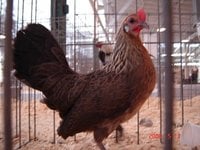General Information
- Breed Purpose
- Ornamental
- Comb
- Single
- Broodiness
- Frequent
- Climate Tolerance
- All Climates
- Egg Productivity
- Medium
- Egg Size
- Small
- Egg Color
- White
- Breed Temperament
- Friendly,Flighty,Easily handled,Bears confinement well
- Breed Colors/Varieties
- In the US- Light Brown, Blue Light Brown, Cream Light Brown,Blue Cream Light Brown, Mille Fleur and Blue Mille Fleur,Citroen,Buff Columbian, Blue Buff Columbian, Wheaten, Silver, Black, Blue, White, Self Blue/Lavender
- Breed Size
- Bantam
- APA/ABA Class
- Single Comb Clean Leg
The Dutch Bantam, as its name implies originated in Holland. The first mention of the Dutch Bantam as a breed is in a Hague zoo record from 1882, and the first Dutch Bantam club was founded in 1906 in Holland. There were various landraces of bantams found in the Netherlands for hundreds of years similar to the current Dutch Bantam, and the originating stock for those birds is thought to be birds that sailors brought back from the Dutch East Indies.
Dutch bantams were first imported into the US in the 1940’s, but these birds disappeared and it wasn’t until the breed was imported again in the 1970’s that they became popular, especially as a show bird. They were recognized by the APA in 1992. They are found in dozens of colors, especially in the Netherlands, in the US the most popular color is probably Light Brown.
One of the smallest breeds of bantam, they are also one of the true bantams (not found in a standard size). As a very small, quite friendly bird, Dutch Bantams are a good choice for the urban chicken keeper looking for a small productive breed that also makes good pets. For bantams, the hens are exceptionally good layers, and stories have it that the Dutch Bantam was historically so popular in the Netherlands because it laid such an abundance of small white eggs which could be kept by the farmer, who was required to turn over large eggs to their landowner. The hens do go broody on occasion and will make good mothers, they are so small though that they can not cover many eggs. They are very good flyers and can be flighty, especially when young. They are good foragers but their small size and single comb does make them susceptible to very cold weather.
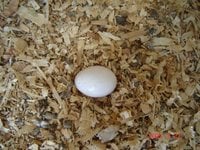
Dutch bantam egg
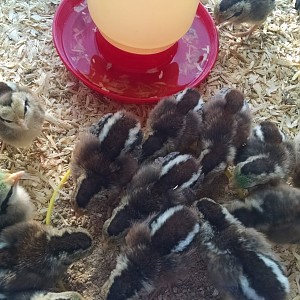
Dutch bantam chicks
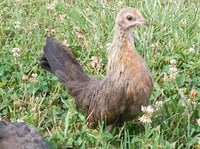
Dutch bantam juvenile
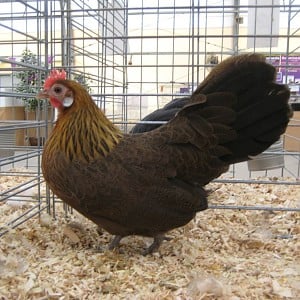
Dutch bantam hen
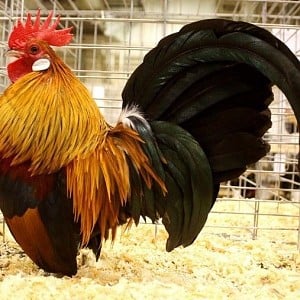
Dutch bantam rooster
For more information on this breed and their owners' and breeders' experiences with them, see our breed discussion here: https://www.backyardchickens.com/threads/chicken-breed-focus-dutch-bantam.1036794/













